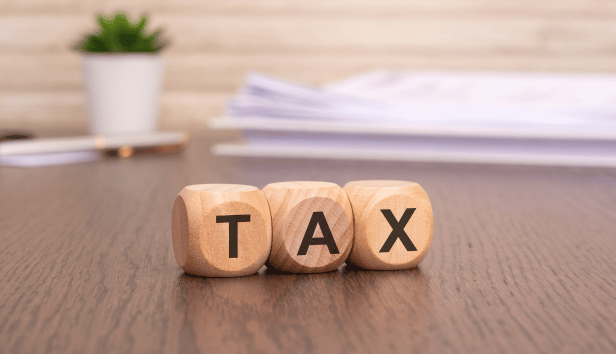
This article is for general guidance only and is not financial or professional advice. Any links are for your own information, and do not constitute any form of recommendation by Saga. You should not solely rely on this information to make any decisions, and consider seeking independent professional advice. All figures and information in this article are correct at the time of publishing, but laws, entitlements, tax treatments and allowances may change in the future.
From April, HMRC is changing the way it applies emergency tax codes to new pension withdrawals. Millions of pensioners should avoid large sudden tax bills as a result.
When the Pension Freedoms were introduced in April 2015, savers with defined contribution pensions were given a choice. They could take their pension out in lump sums, rather than being forced to buy an income for life (an annuity).
But this new pension flexibility created problems in the tax system and led to people being charged an emergency tax on withdrawals. HMRC is now putting changes in place to reduce the risk of this happening, as we’ll explain.
What’s on this page?
You can take 25% of your pension tax-free. After that, pensions are taxed as income, usually at the marginal rate – 20% for basic rate taxpayers, 40% for higher and 45% for additional. However on initial and flexible withdrawals, HMRC applies ‘emergency tax codes’.
This means people often end up paying far more tax than needed upfront, and then have to claim it back. Since the system was put in place in 2015, more than 470,000 claims have been made for refunds totalling £1.37 billion, according to analysis of HMRC figures by wealth firm AJ Bell.
In the last three months alone, nearly £50m was repaid to over 14,000 people, the latest HMRC data shows. The average reclaim amount was £3,389. Tom Selby, director of public policy at AJ Bell, says this is likely to be only the tip of the iceberg, as it only captures those who fill in the relevant HMRC reclaim form.
“In reality, lots of people, such as those on lower incomes who are less familiar with the self-assessment system, will not go through the official process of reclaiming the money they are owed. As a result, they will be reliant on HMRC putting their affairs in order.”
The overtaxation problem arises because of the way people are taxed when they first start taking their defined contribution pension. Since 2015, HMRC has chosen to tax the first flexible withdrawal someone makes in a tax year on what is known as a ‘Month 1’ basis. This means HMRC divides your usual tax allowances by 12 and applies them to the withdrawal. This has landed savers with shock tax bills often running into thousands of pounds.
People taking their pension as a regular income, or who make a number of withdrawals in any given tax year, should have any overtaxed amount repaid automatically by HMRC – though it’s still a good idea to check your tax records to ensure you receive the correct refund. But anyone who makes a single withdrawal will likely be left out of pocket, unless they actively reclaim it.
It is possible to get your money back within 30 days, but only if you fill out the correct HMRC form. If you don’t, you are left relying on the efficiency of HMRC to repay you at the end of the tax year. Clare Moffat, pensions expert at Royal London, gives an example of how you can be overtaxed.
“For a first withdrawal, someone taking out £30,000 would normally receive £7,500 as tax free cash (25%) with the remaining amount taxed as if their monthly income is £22,500, even if the pension holder has no intention of taking further pension income that year. In other words, they pay £8,503 in emergency tax. However, if basic rate tax was applied it would be £1,984. The difference – the additional £6,519 – needs to be claimed back,” she says.
After 10 years of the problem of pension overtaxation, HMRC has now announced that from April 2025 it will make changes to its systems to fix the issue. The tax office will move much more quickly to replace the ‘emergency’ tax codes it applies to pension withdrawals with regular tax codes. This should mean the correct amount of tax is deducted in real time.
As a result, far fewer people will have to fill in forms to reclaim money owed to them because of overtaxation, or wait for HMRC to do the necessary end-year reconciliations. The changes should particularly benefit people who make multiple withdrawals in a single year.
In a newsletter announcing the fix, HMRC said: “From April 2025 we are improving how tax code information is used for those people who are new to receiving a private pension, so they pay the right amount of tax from the outset.
“We will automatically update the tax code for customers who are on a temporary tax code and would benefit from being on a cumulative code — this means they’ll avoid an overpayment or underpayment at the end of the year. There is no need to contact HMRC and once a tax code has been changed we’ll inform customers by letter or digitally if they’ve signed up for paperless in the HMRC app or online.”
Steve Webb, partner at pension consultants LCP and a former Pensions Minister who has campaigned on this issue for many years, says the new system should mean that far more people are quickly moved on to the correct tax code and no longer end up with an overpayment of tax.
“For too long, hundreds of thousands of people have been overtaxed and had to jump through hoops to claim back their own money. The tax system is complex enough as it is, and this change should hopefully reduce the complications which pension savers face when they try to access their hard-earned cash”.
While the April changes will benefit individuals on an emergency tax code, they might not help those taking ad-hoc lump sums from their drawdown pot. “The first payment for all will likely remain overtaxed, since it takes time for HMRC to adjust tax codes appropriately, often following a course of regular payments throughout the year,” says Selby at AJ Bell.

One way that savers planning to take a single withdrawal in a tax year could avoid the shock of a big overtaxation bill is by taking a small (notional) withdrawal first. This should mean HMRC is able to apply the correct tax code to the second, larger withdrawal.
How you get back any overpaid pension tax depends on how you are taking your withdrawals. If you’re taking a steady stream of income via pension drawdown and you’re overtaxed, you shouldn’t need to take any action. HMRC will adjust your tax code so that over the course of the year you are taxed the right amount.
But if you make a single withdrawal and are overtaxed, you’ll need to fill out one of three forms to reclaim it back. Alternatively, you could rely on HMRC fixing the issue, and setting you right, at the end of the tax year.
If you want to reclaim your money yourself, which form you need to fill out will depend on your employment and benefit situation and how you have withdrawn money from your retirement pot:
As long as you fill out the correct form, HMRC says you should receive a refund of any overpaid tax within 30 days.
Income from defined benefit pensions, such as final salary or career average pensions, is also taxed at the marginal rate – 20% for basic rate taxpayers, 40% for higher and 45% for additional. Your payments are taxed automatically before you receive them. Many defined benefit pension schemes offer the option to take a tax-free lump sum, though the specific rules and amounts vary.
Moffat says: “You would normally receive your defined benefit pension in the form of tax-free cash, and then a regular income paid monthly. This means that there isn’t the same issue with the taxation of larger sums and the change from April should mean that the correct tax code is applied faster than before.”


We're here to help you make the most with your money. With a rage of financial services designed with over 50s in mind.

Find out the pros and cons, and what it could mean for your income and tax bill.



